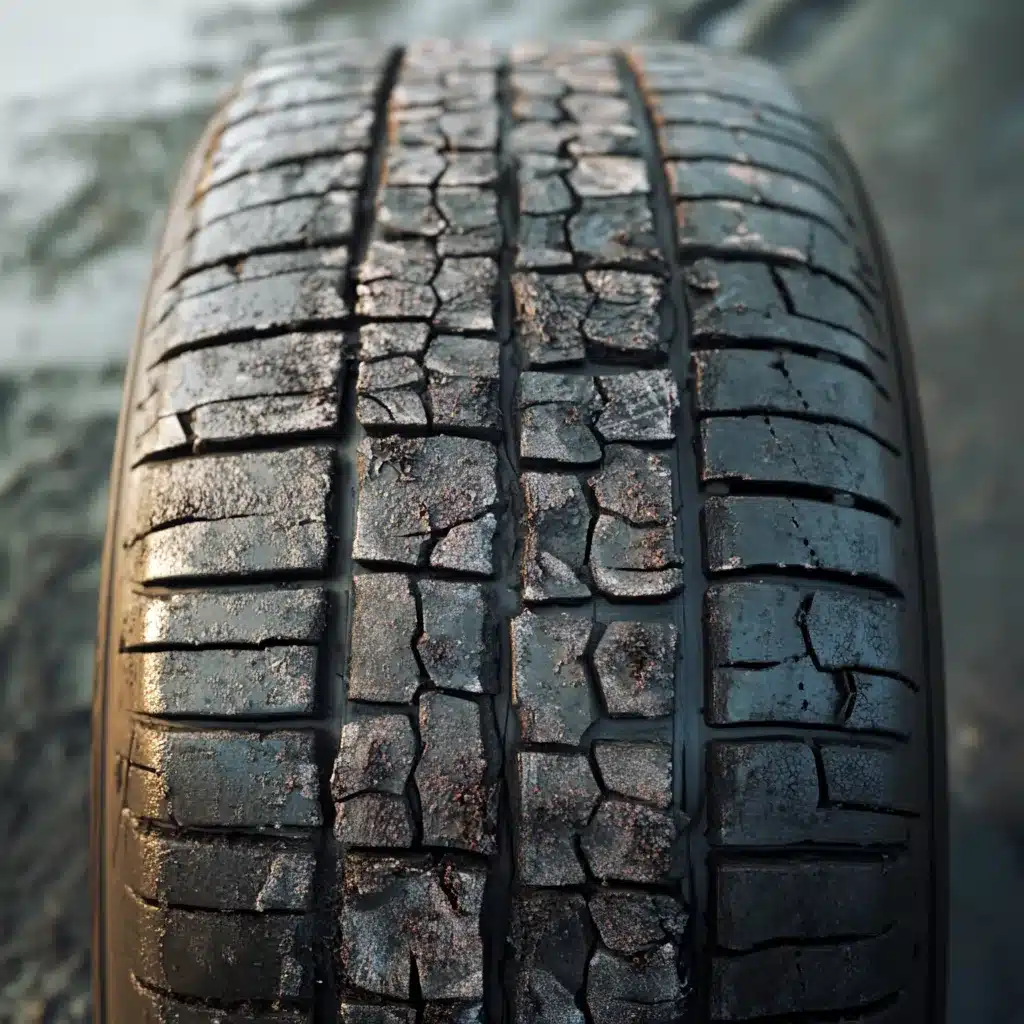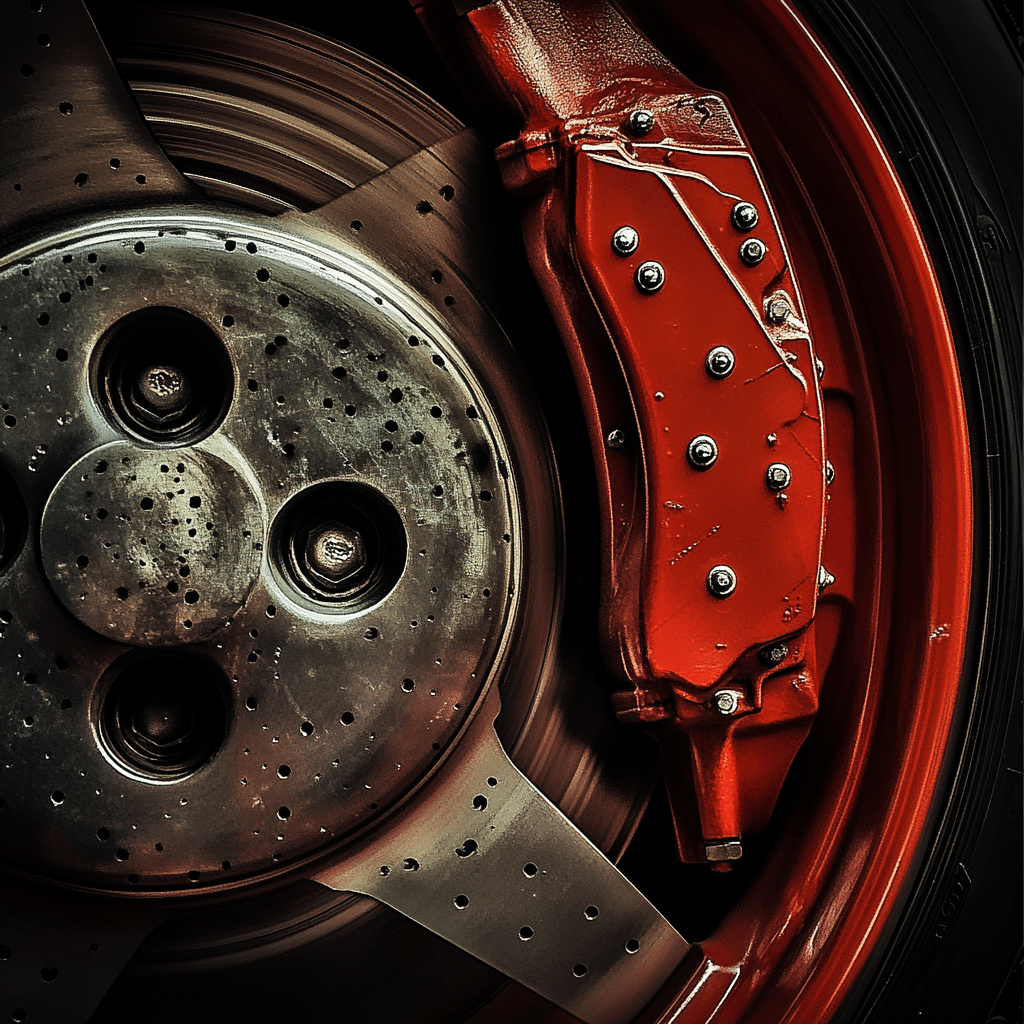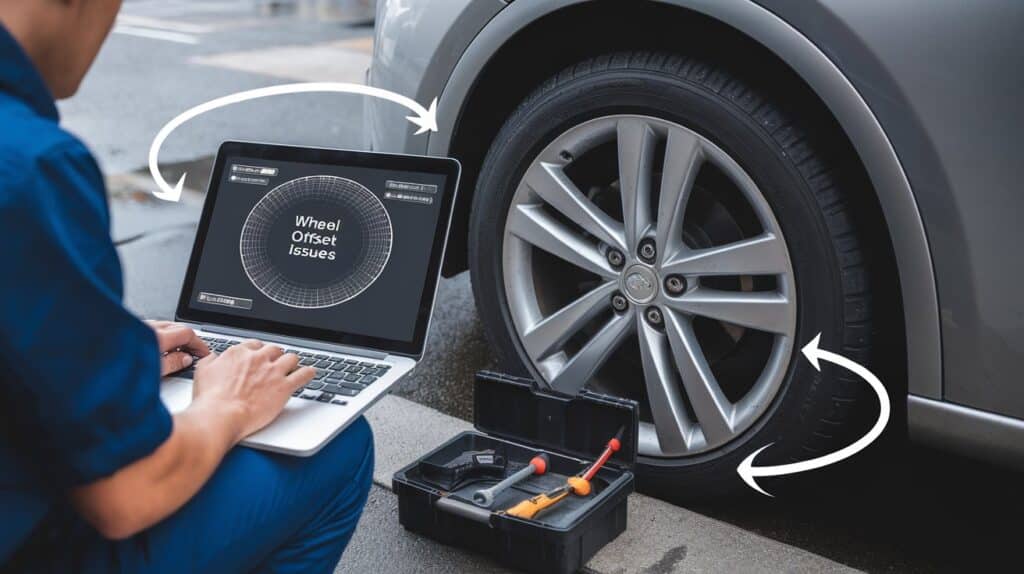Have you ever noticed your car’s wheels looking slightly off, sticking out too far, or tucked in too deep?
You’re not alone. Wheel offset issues plague many drivers, causing headaches ranging from poor handling to premature tire wear.
But here’s the good news: fixing wheel offset problems isn’t as daunting as it seems.
This guide will explain wheel offset and why it matters for your vehicle’s performance and safety.
We’ll walk you through common offset issues and provide straightforward solutions you can apply.
Whether you’re a car enthusiast or want your ride to run smoothly, this article covers you.
By the end, you’ll have the know-how to spot and fix wheel offset problems, keeping your car running safely and looking great on the road.
Rubbing Against Suspension or Body Components

Wheel offset issues can cause your tires to rub against suspension parts or body panels, a common problem that’s more than just a nuisance.
This occurs when wheels are positioned too far inward or outward due to incorrect offset.
Positive and negative offsets can lead to this issue, often arising after installing new wheels without considering proper fitment.
While it might seem minor, the consequences can be severe, affecting your vehicle’s performance, safety, and longevity.
Impact on Performance
Incorrect wheel offset can have serious consequences for your vehicle.
The constant rubbing can cause premature tire wear, increasing the risk of blowouts, especially at high speeds.
Tires are not the only ones at risk; suspension components and body panels can also suffer damage, potentially compromising your vehicle’s structural integrity.
This can lead to altered handling characteristics, raising safety concerns in critical driving situations.
If unchecked, even minor rubbing can weaken components over time, turning small issues into major, costly repairs.
These impacts highlight correct wheel offset’s crucial role in maintaining vehicle performance and safety.
Detecting the Issue
Identifying rubbing problems early can save you from more serious complications later. Here’s what to look out for:
1. Visual Signs
Inspect your tires, wheel wells, and suspension components regularly.
Look for unusual wear patterns on the tire sidewalls or marks inside your fenders.
These are telltale signs that rubbing is occurring.
2. Auditory Cues
Pay attention to any unusual noises while driving.
Scraping or grinding sounds, especially when turning or going over bumps, can indicate that your tires are making contact with other parts of your vehicle.
3. Driving Behavior
Notice any changes in how your car is handled? If your vehicle feels less responsive or behaves differently during turns, it could be due to rubbing issues affecting your suspension geometry.
Fixing the Issue
Addressing wheel offset problems requires careful consideration of your options:
1. Offset Adjustment
One solution is to adjust the wheel offset. This can be done using wheel spacers, which effectively change the wheel’s position relative to the hub.
However, be cautious – spacers must be high-quality and properly installed to ensure safety.
Alternatively, you might need to choose wheels with a different offset. This is often the best long-term solution, as it addresses the root cause of the problem.
2. Suspension Modifications
In some cases, minor suspension modifications can help resolve rubbing issues.
This might involve adjusting the ride height or changing suspension components to provide more clearance.
However, any suspension changes should be done carefully to maintain proper vehicle dynamics.
3. Wheel Replacement
If adjustments and modifications aren’t feasible, you might need to replace your wheels entirely. When selecting new wheels, prioritize proper fitment.
Consider the size and offset and factors like load rating and hub-centric fit to ensure optimal performance and safety.
Increased Steering Effort and Reduced Steering Response

Wheel offset plays a crucial role in your vehicle’s steering dynamics. When offset is incorrect, it can lead to increased steering effort and reduced responsiveness.
This issue is particularly noticeable in high-performance or modified vehicles, where precise handling is key.
Let’s explore how offset changes affect the scrub radius and steering geometry, ultimately impacting your driving experience.
Impact on Performance
Incorrect wheel offset can significantly alter your car’s handling characteristics.
You might notice heavier steering, requiring more force to turn the wheel, especially at low speeds.
The car may feel less responsive, with a delay between your input and the vehicle’s reaction.
This can affect your ability to maneuver quickly in emergencies or navigate tight spaces confidently.
From a safety perspective, reduced steering response can increase the risk of accidents, particularly in situations requiring rapid direction changes.
The impact is often more pronounced at higher speeds or in adverse weather conditions, where precise control is crucial.
Detecting the Issue
Identifying steering problems early is crucial. Here are some signs to watch for:
1. Steering Feel
Pay attention to how the steering wheel feels in your hands during your daily drives.
Does it seem heavier than usual? Does it require more effort to turn, especially at lower speeds?
These could be indicators of an offset-related issue.
2. Response Time
Note any delays between your steering input and the car’s response.
A properly set up car should react almost immediately to steering wheel movements.
It might be time to check your wheel offset if you notice a lag.
3. Diagnostic Tests
Here are some simple tests you can perform to check your steering:
- On a quiet, straight road, make small, quick steering inputs. Your car should respond immediately without delay.
- In an empty parking lot, drive in a figure-eight pattern. Pay attention to how the car transitions from one turn to another.
- During a turn, observe how the steering wheel returns to the center. It should do so smoothly and without requiring extra effort from you.
Fixing the Issue
When addressing steering problems related to wheel offset, consider these unique approaches:
1. Steering System Diagnosis
Before making any changes, have a professional mechanic diagnose your steering system thoroughly. This may include:
- Checking for worn tie rod ends or ball joints
- Inspecting the steering rack or box for leaks or excessive play
- Evaluating the power steering pump and fluid condition
Understanding the full picture of your steering system’s health is crucial before addressing offset-related issues.
2. Tire Pressure and Condition
Steering effort issues can sometimes be exacerbated by improper tire pressure or uneven wear. Ensure that:
- All tires are inflated to the manufacturer’s recommended pressure
- Tire tread is even across all four wheels
- There are no bulges or damage to the sidewalls
Properly maintained tires can significantly improve steering feel and response.
3. Suspension Tuning
In some cases, adjusting your suspension can help mitigate steering issues caused by offset changes:
- Consider upgrading to stiffer springs or shock absorbers to improve responsiveness
- Adjusting sway bars can help fine-tune the balance between steering effort and cornering stability
These modifications should be done carefully to balance handling and comfort.
4. Electronic Steering Calibration
For vehicles with electric power steering:
- Some modern vehicles allow for electronic calibration of the power steering system
- This can adjust the assist levels to compensate for changes in wheel offset
- Consult with a specialist who can access and modify your vehicle’s electronic steering parameters
Uneven Tire Wear and Tear

Incorrect wheel offset can lead to many issues, and one of the most common is uneven tire wear.
This problem occurs when the offset causes improper pressure distribution on your tires.
Let’s explore how offset influences the tire contact patch and load distribution, leading to irregular wear patterns.
Impact on Performance
Uneven tire wear due to incorrect offset can significantly affect your vehicle’s performance and your wallet:
- Tire life is considerably shortened, leading to more frequent replacements
- Vehicle stability may be compromised, especially in wet conditions or during emergency maneuvers
- The cost of premature tire replacements can add up quickly, not to mention potential safety risks
Detecting the Issue
Spotting uneven tire wear early can save you from more serious problems. Here’s what to look for:
1. Visual Inspection
Regularly examine your tires for these tell-tale signs:
- Inner or outer edge wear: This could indicate camber issues related to offset
- Feathering or scalloping: Often a sign of toe misalignment, which can be exacerbated by incorrect offset
- Center wear: While often associated with overinflation, it can also be influenced by offset changes affecting weight distribution
2. Pressure Monitoring
Keep an eye on your tire pressures. Uneven load distribution due to offset issues can cause:
- Irregular pressure changes between tires
- Consistent low pressure in certain tires despite regular inflation
3. Tread Depth Check
Use a tread depth gauge to measure different areas of your tires:
- Check the inner, center, and outer portions of each tire
- Compare measurements between tires and across different sections of the same tire
- Significant variations in tread depth are a clear indicator of uneven wear
Fixing the Issue
Addressing uneven tire wear requires a multi-faceted approach:
1. Comprehensive Suspension Inspection
Before making any adjustments:
- Have a professional inspect your entire suspension system
- Look for worn bushings, ball joints, or control arms that could contribute to wear issues
- Address any suspension component problems before tackling offset adjustments
2. Tire Balancing and Rotation Schedule
Implement a rigorous tire maintenance routine:
- Balance your tires every 5,000 to 8,000 miles or when you notice vibrations
- Rotate your tires according to your vehicle manufacturer’s recommended pattern and frequency
- Consider cross-rotation patterns, if your vehicle setup allows, even out to wear more effectively
3. Driving Habit Adjustments
Sometimes, your driving style can exacerbate wear issues:
- Avoid aggressive cornering and sudden acceleration or braking
- Reduce your speed when driving on rough or uneven road surfaces
- Be mindful of how you load your vehicle, as uneven weight distribution can affect tire wear
Poor Handling and Vehicle Stability

Improper wheel offset can significantly impact your vehicle’s handling and stability.
This issue goes beyond mere discomfort; it affects how your car responds to your inputs, especially during critical maneuvers.
Let’s explore how offset influences your vehicle’s center of gravity, balance, and overall dynamics.
Impact on Performance
Incorrect wheel offset can have far-reaching effects on your vehicle’s performance:
- Cornering ability may be compromised, with the car feeling less planted during turns
- Driver confidence can wane as the vehicle’s responses become less predictable
- In extreme cases, safety may be at risk, particularly in emergency maneuvers or adverse weather conditions
Detecting the Issue
Recognizing how to handle and stabilize problems early is crucial. Here’s what to look out for:
1. Handling Symptoms
Pay attention to how your vehicle behaves during normal driving:
- Does the car sway more than usual during lane changes?
- Is there excessive body roll when cornering?
- Do you notice the vehicle drifting or pulling to one side on straight roads?
These symptoms could indicate offset-related stability issues.
2. Road Test
Perform a safe road test to evaluate your vehicle’s handling:
- Find an empty, safe area like a large parking lot
- Perform a slalom maneuver between imaginary cones
- Execute a quick lane change maneuver
During these tests, note any unusual behavior, such as delayed responses or excessive body movement.
3. Feedback from Suspension
Listen and feel for unusual feedback from your suspension:
- Clunking or rattling noises during turns or over bumps
- Vibrations through the steering wheel or seat
- A “floaty” feeling, as if the car isn’t firmly planted on the road
Fixing the Issue
Addressing handling and stability problems requires a comprehensive approach:
1. Weight Distribution Analysis
Before making changes:
- Have your vehicle’s weight distribution checked on a corner balance scale
- Understand how the current offset affects weight transfer during cornering
- This information will guide your offset correction strategy
2. Performance Alignment
Go beyond a standard alignment:
- Consider a performance-oriented alignment that factors in your driving style and vehicle use
- Adjust camber, caster, and toe settings to complement your offset changes
- This can significantly improve handling characteristics and tire wear
3. Suspension Upgrades
In some cases, suspension modifications can help:
- Upgrade to adjustable coilovers to fine-tune ride height and damping
- Install adjustable sway bars to control body roll more effectively
- Consider polyurethane bushings for tighter suspension feel and response
4. Tire and Wheel Selection
Choose tires and wheels that complement your offset:
- Opt for tires with an appropriate load rating for your vehicle and driving style
- Consider wider tires, if your offset allows, for improved grip and stability
- Ensure wheel width is suitable for your chosen tire size and vehicle specifications
Brake Interference

When wheel offset is incorrect, it can lead to a serious issue: brake interference.
This occurs when the wheels come too close to brake components, potentially causing contact and compromising your vehicle’s braking system.
Let’s explore how this happens and why it’s crucial to address.
Impact on Performance
Brake interference due to incorrect wheel offset can severely affect your vehicle’s performance and safety:
- Braking efficiency may decrease, leading to longer stopping distances
- Brake components can wear out faster, increasing maintenance costs
- In extreme cases, it could lead to brake failure, posing a significant safety risk
Detecting the Issue
Identifying brake interference early is crucial. Here are some unique ways to detect this problem:
1. Brake Dust Pattern Analysis
Examine the brake dust accumulation on your wheels:
- Uneven dust patterns may indicate uneven contact between brake components and the wheel
- Look for clean spots on the wheel where dust doesn’t accumulate, suggesting potential contact points
2. Temperature Differentials
After a drive, carefully (and safely) feel for temperature differences across your wheel:
- Hot spots on the wheel’s inner surface could indicate areas of brake component contact
- Use an infrared thermometer for a more precise and safer measurement
3. Wheel Rotation Test
Perform this simple test when the car is safely lifted and supported:
- Remove the wheel
- Reinstall it in a different rotation (e.g., turn it 90 degrees)
- If interference issues disappear or change, it suggests the problem is related to wheel offset or brake alignment
4. Brake Fluid Inspection
Regularly check your brake fluid:
- Unusual discoloration or particles in the fluid might indicate excessive wear from component interference
- More frequent need for brake fluid changes could suggest accelerated wear of brake parts
Fixing the Issue
Addressing brake interference requires careful consideration and often professional help:
1. Clearance Assessment
Before making any changes:
- Use a wheel spacer gauge to measure the exact clearance between your wheels and brake components
- Take measurements at various points around the wheel, as clearance can vary
- Document these measurements for reference when selecting new wheels or making adjustments
2. Caliper Modification
In some cases, modifying your brake calipers can help:
- Some high-performance calipers offer adjustable positioning
- For certain vehicles, aftermarket caliper brackets can shift the caliper’s position slightly
- Always consult with a brake specialist before modifying any brake components
3. Brake System Upgrades
Sometimes, upgrading your brake system can solve interference issues:
- Slimmer, high-performance brake calipers might offer better clearance
- Smaller diameter rotors (if suitable for your vehicle) could provide more space
- Remember, any brake system changes should maintain or improve your vehicle’s braking performance
4. Professional Installation and Testing
After making any changes:
- Have a professional perform a thorough brake system inspection
- Conduct a controlled brake test in a safe environment to ensure proper function
- Consider a wheel alignment, as offset changes can affect overall suspension geometry
Excessive Wear on Suspension and Driveline Components

Incorrect wheel offset doesn’t just affect your tires and brakes; it can significantly strain your vehicle’s suspension and driveline components.
This increased stress can lead to premature wear and potential failures, impacting your vehicle’s performance, reliability, and wallet.
Impact on Performance
The consequences of excessive wear due to incorrect offset can be far-reaching:
- Suspension and driveline parts may wear out much faster than normal, requiring frequent replacements
- Your vehicle’s reliability could be compromised, increasing the risk of breakdowns
- The financial burden of replacing these components can be substantial, especially for high-performance or luxury vehicles.
Detecting the Issue
Catching suspension and driveline wear early can save you from costly repairs. Here are some unique ways to spot potential problems:
1. Uneven Tire Tread Wear on Drive Wheels
For vehicles with incorrect offset on drive wheels:
- Check for unusual wear patterns on the inner or outer edges of drive tires
- This can indicate stress on CV joints or differential components
2. Grease Analysis
For vehicles with greaseable joints:
- When lubricating suspension or driveline components, collect a small sample of the old grease
- Look for metal particles or discoloration, which can indicate accelerated wear
3. Shock Absorber Temperature Test
After a drive, carefully feel the temperature of your shock absorbers:
- If one is significantly warmer than the others, it may be working harder due to offset-related stress
- Use an infrared thermometer for a safer and more accurate measurement
4. Driveshaft Vibration Test
For vehicles with a driveshaft:
- Safely lift and support the drive wheels
- With the engine running and transmission in drive, observe the driveshaft
- Look for excessive vibration or movement, which can indicate wear due to altered angles from incorrect offset
Fixing the Issue
Addressing excessive wear on suspension and driveline components requires a comprehensive approach:
1. Load Distribution Analysis
Before making changes:
- Have your vehicle’s weight distribution analyzed on a four-corner scale
- Understanding how the current offset affects load can guide your correction strategy
2. Bushing and Mount Upgrades
Consider upgrading suspension bushings and mounts:
- Polyurethane or harder rubber bushings can better withstand the stress of offset changes
- Reinforced motor and transmission mounts can help mitigate driveline stress
3. Driveline Angle Correction
For vehicles with a driveshaft:
- Adjust the pinion angle to compensate for changes caused by offset
- Consider installing an adjustable driveshaft center support bearing if applicable
4. Suspension Geometry Correction
Address any changes in suspension geometry:
- Install adjustable control arms to fine-tune the camber and caster
- Consider a short arm (SLA) conversion for vehicles where extreme offset changes have significantly altered suspension geometry
Final Thoughts
Wheel offset isn’t just a fancy term for car enthusiasts – it’s crucial to your vehicle’s performance and safety.
We’ve explored how incorrect offset can lead to various issues, from uneven tire wear to brake interference.
But here’s the good news: armed with the knowledge from this guide, you’re now equipped to spot and address these problems early.
Remember, your car’s health is in your hands. By paying attention to the signs we’ve discussed and taking prompt action, you can avoid costly repairs and ensure a smoother, safer ride.
Whether you’re a DIY mechanic or prefer professional help, understanding wheel offset is key to maintaining your vehicle’s peak performance.
So, think about your wheel offset next time you hear an unusual noise or feel something off while driving.
It might just be your car’s story’s unsung hero – or villain.


